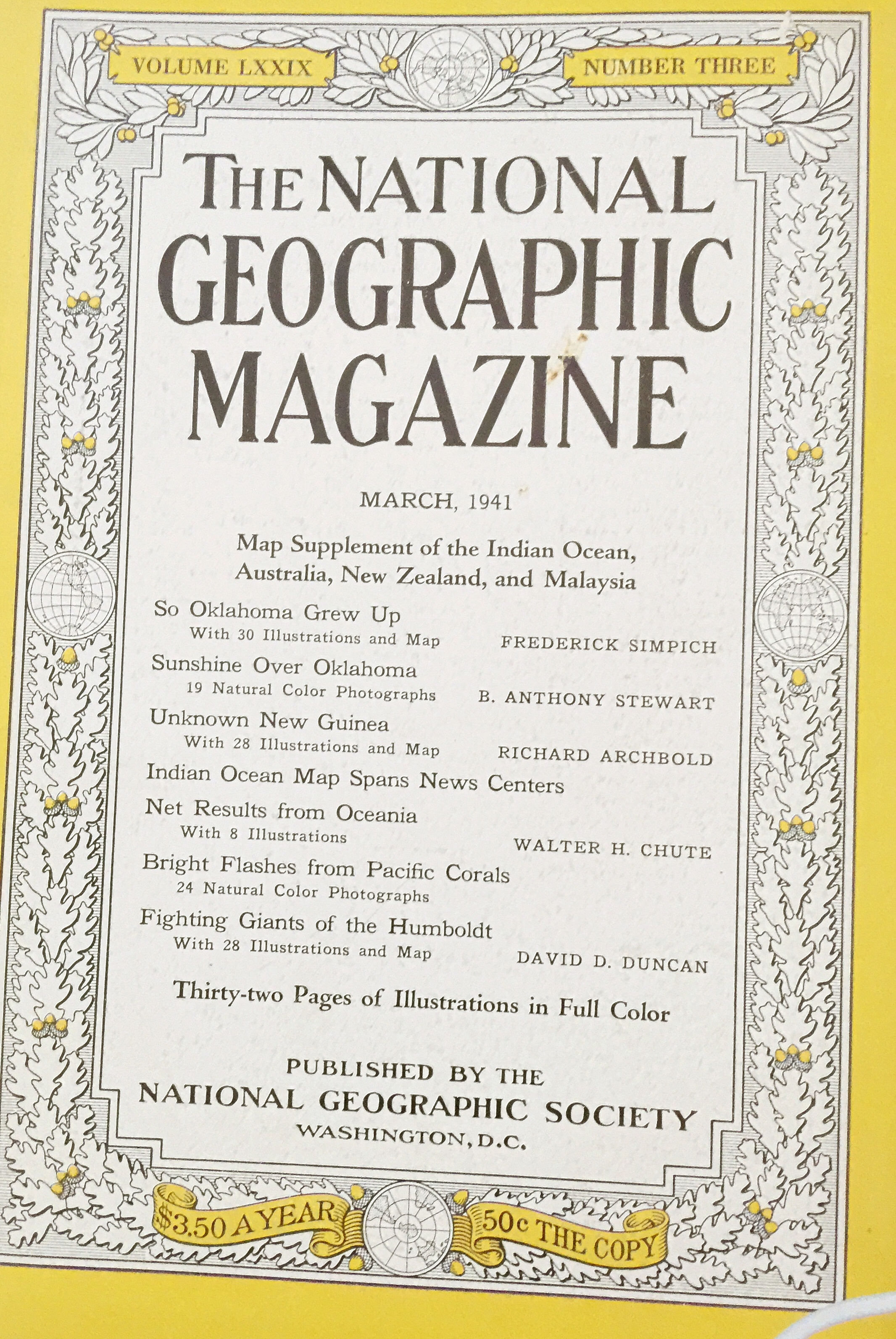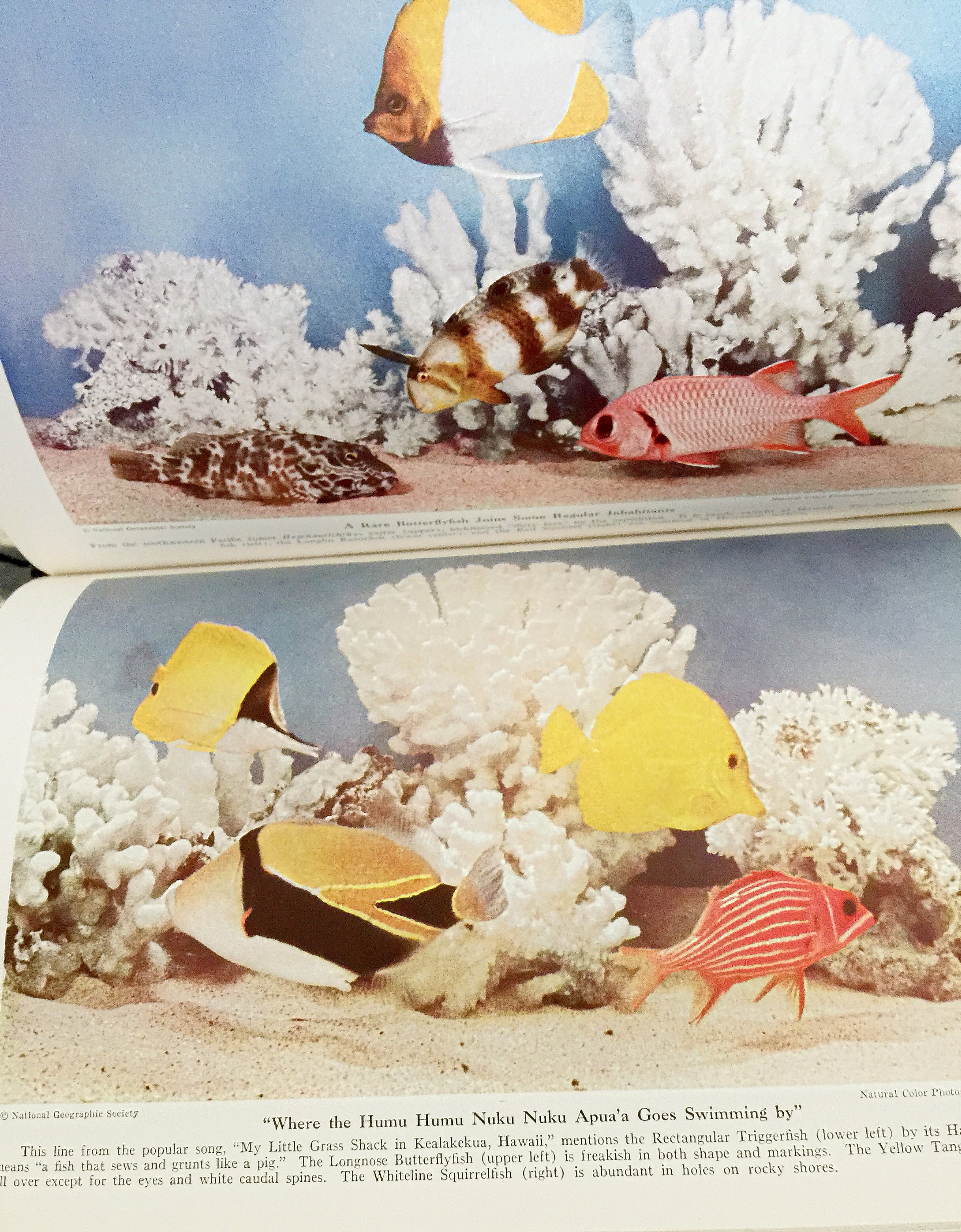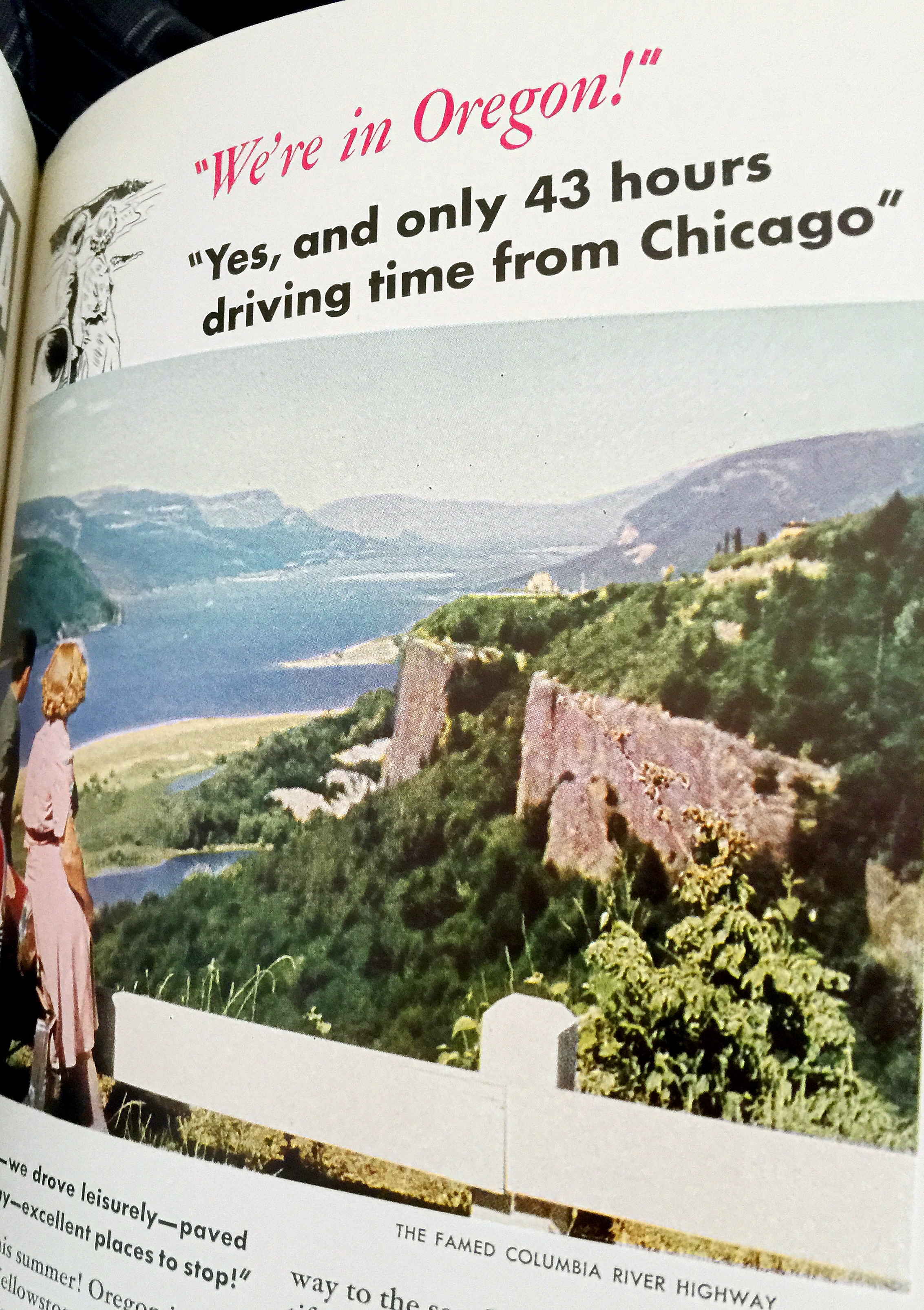Thinking About The National Geographic, Dated 1941
May 02, 2015
I am down in Southern California for the weekend and asides from the suffocating heat, the thing that I am most able to drown myself in is the nostalgia. I was going through some of my old things, reveling in the memories when I came across this:

I used to be a big fan of used library book sales, rummaging through them everyday to look for whatever that might have caught my fancy. I used to bring home dozens of National Geographic issues from the past. Most of them have been thrown away it appears (they weren’t that great anyway) but this one remained and on a whim I picked it up.
It is hard to think about what the world was like in March 1941. Some of the major historical events from that time period:
- Captain America’s first ever appearance in a comic book
- German troops attacked Bulgaria
- FDR signs the Lend-Lease Act, allowing the Allies to buy items from the US and delay payment until after the war
The clouds of war were thick in 1941. Germany was 2 months away from invading Russia, opening itself a second front. It was eventually a strategic blunder that would end the War. Along the way, 4.8M+ people will die.
The issue itself had a number of interesting stories, but first some ads.
Native Advertising, man, It’s the Future

I like to imagine that some dude from the tv series Mad Men wrote this. I admire this ad’s smart tagline and awareness of its context. It knows that it is in a nature magazine and it knows that its readers are people who like to read about nature.
The Ad actually does not give away its advertiser until deep into the article. There are about 4-5 paragraphs about the Yucca moth, it is not until shortly then the informational stuff starts to give away to copy that introduces the situation and the premise of the ad: You need insurance dude. Traveler’s (soon to be Citi I believe).
As an ad man myself, I love the imagery, which is colorful with deep shades of red with some contrasting whites (and an adorable butterfly). And I recognize the Buzzfeedy, clickbait headline “Why the Yucca Moth is a model parent”. That’s right out of 2015, boys. Everyone is getting all excited about Buzzfeed and its model of native advertising and NatGeo already got there long time ago.
The Articles
I enjoyed just how lavishly photographed and illustrated the pages and stories were. Each story had 19-30 illustrations accompanying them. Some of them were in color but most of them were in black and white.
The first two stories are about Oklahoma - which makes perfect sense being side by side with stories from Oceania, New Guinea and the Pacific corals. It is a little puzzling to me that they would write a story about this but okay. The thing that I found to be a funny parallel between then and now is that the story talks about the effect oil wealth has on the country. Back then, they are drilling mini oil wells and making millions. Today they are “fracking” and same thing they are making millions.
The next article is about a trip to New Guinea, which is more in the line of what you would expect from the National Geographic. The article was very well written, it was descriptive and generally just follows the sequence of events that happened to the author as they went ahead and photographed these native people. I had expected there to be some sort of backwards-thinking condescending tone in the writing but generally it was just formal and imbued with wonder.
The next set of articles was about an expedition to the oceans near Australia and the Pacific corals for the Shedd Aquarium. I am an aquarium freak and I loved taking a look at these wonderfully big images. They are not printed in the best of resolutions, with some fuzziness that looks wonderfully vintage, but I think the vibrancy of the colors is something you are missing in today’s LED screens. Even so, the expectations for nature life photography has taken another step from the 1940s.

These photographs are fine if you are illustrating images in your fish encyclopedia, but nowadays people expect the ‘natural’. You cannot be taking photographs of fish in a tank as what obviously happened here.

Amazing to think that the technology of today now allows people to do incredible things and place people at the natural environments of the animal subjects.
Oregon Needs the Traffic
Ads of course close out the issue.

Native advertising man.
I enjoyed reading this piece of work from the past. It was a totally different time back then, and it was worth it to sit back and contemplate a little bit about what that might have meant. 1941 was 74 years ago. People who were born and lived back then who can still remember what it was like are dying off. 74 years from now, people will look back at us too and think about all the things that have changed and how much they have stayed the same.
Share